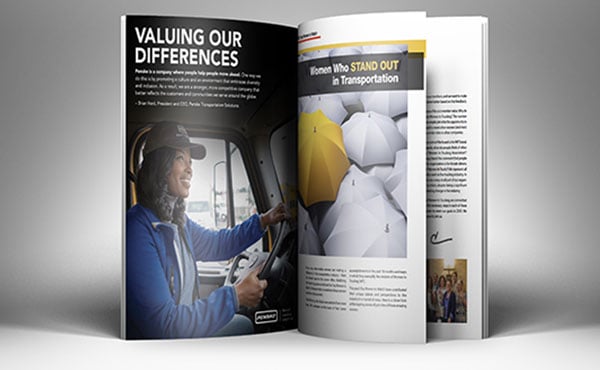Selling in the New Normal
by Michele Wade, on Nov 24, 2020 11:15:22 AM

What specific challenges are sales professionals facing? Redefining the Road Magazine recently connected with two sales executives who are WIT members to discuss the current sales environment (virtually, of course).
 Forging Connections at TransForce Group
Forging Connections at TransForce Group
“The biggest issue with COVID is how to connect with buyers,” explains Kimberly Castagnetta, Executive Vice President, Marketing, at TransForce Group, who sells workforce solutions for motor carriers. “Transportation is a people’s business first. Our branch managers and recruiting teams have always interacted with customers face-to-face at yards, docks, et cetera. Today, they can’t get in.”
The need for social distancing and travel restrictions also has altered the look of sales presentations. “Previously, we would bring all our constituents together for an in-person presentation and outline our full value proposition,” Castagnetta says. “Now our sales presentations are more targeted – 30- to 45-minute virtual meetings with multiple individuals instead of a two-hour meeting with the whole buying group.”
This more fragmented approach makes it challenging to showcase the company’s integrated portfolio of solutions, she points out.
Castagnetta predicts that a more virtual sales process likely will be the new normal. “I think it’s here to stay,” she says. “We’re going to adjust and determine how we can best support our sales reps and our customers.”
Already the sales team has implemented virtual weekly sales huddles with small groups to provide coaching tips, share what’s working, etc. They recently launched a video platform utilizing gamification to assist with lead generation and a sales training program which focuses on virtual delivery.
TransForce also has focused on a buyer persona approach and has partnered with an outside firm to conduct “voice-of-the-customer” research.
“Taking a much deeper dive with our core audience has helped us to better understand the value we bring to our customers, so we can maximize our scope of influence and expand into other sales workstreams within the same client,” Castagnetta explains.
The company has beefed up communication tools and adapted marketing content to be more effective via virtual delivery mechanisms. They are also investing in autodialing technology to support outbound sales efforts.
Finding ways to connect with prospective customers personally is a top priority. “We need to find ways to get the human touch back into the sales process,” she says.
 Offering Greater Flexibility at Volvo Trucks
Offering Greater Flexibility at Volvo Trucks
“COVID definitely has been challenging,” says Christina Ameigh, Regional Vice President – Western US, Volvo Trucks North America. “It has changed the way we’re doing business. We had to reset quickly – find new ways of working, new sales tools,” she explains.
Moving inventory between locations, extending uptime services through year-end, modifying payment structures, and offering flexible terms for trade-ins are just a few of the ways the company has tried to support customers that are struggling in the pandemic, Ameigh says.
“You have to be able to look at the whole situation and have empathy,” she says. “We need more creativity and flexibility than ever before.”
The sales process has changed as well. The sales team now uses a mix of virtual and face-to-face meetings.
“In the past, we would meet customers or dealers in more casual scenarios, such as business lunches or dinners. Today, we reserve in-person meetings for discussing critical issues,” Ameigh explains.
Like so many companies, Volvo Trucks has turned to Skype and video conferencing for much of its interactions with clients.
“Presenting can be tricky since we usually have three organizations involved – Volvo Trucks, the dealer and the customer,” Ameigh explains. “You run into firewall issues, bandwidth issues…There are probably technological hiccups seven out of 10 times, but we’ve made it work!”
The company has even transitioned to virtual pilot reviews. “Usually, we would fly people to our customer center in Virginia to inspect their new trucks, but now we’re unveiling them virtually,” she explains, noting that customers have responded positively to the video walk-arounds.
One advantage of a more virtual sales process, Ameigh points out, is that customers generally are able to schedule virtual meetings much more quickly than in person. As a result, deal cycles have been noticeably shorter in the past six months.
“Obviously, the pandemic has caused numerous challenges, but there actually have been a lot of positives to come out of it as well,” she says. “Everyone has tightened up, reset. We’re reevaluating how we’re doing things. We’re working smarter.”
This article was originally featured in Edition 3 of 2020 in our official magazine, Redefining The Road.
Like this kind of content? As a member of the Women In Trucking Association, stay on top of emerging trends and business issues impacting transportation, logistics, and supply chain operations, learn the importance of gender diversity in the workplace and the need for more women drivers, and see best practices in encouraging the employment of women in the trucking industry. Learn More






